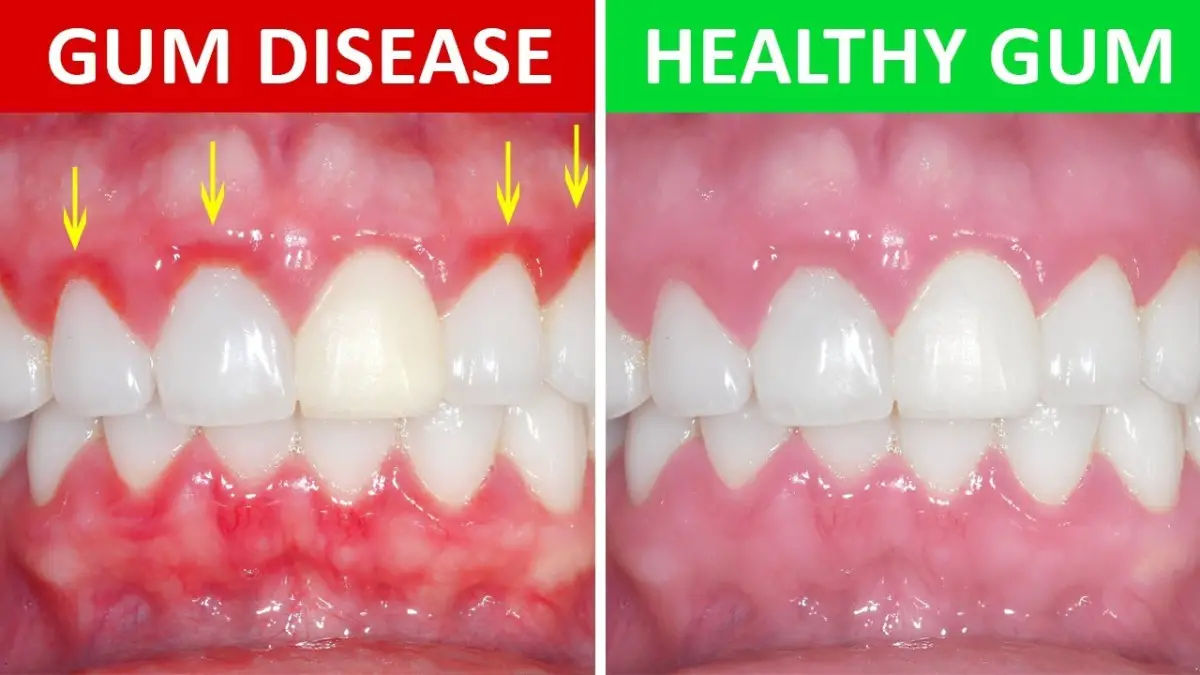Last Updated on 1 year by Francis
If you’ve noticed that your teeth and gums don’t feel quite right, then you may be wondering if you have gum disease. Gum disease is a serious condition that can lead to tooth loss, pain, and even heart disease, so it’s important to understand the signs and symptoms so you can act quickly to treat it if needed. In this article, we’ll explore the common signs of gum disease, as well as the treatments available and the steps you can take to prevent it from occurring. So, if you’re wondering how to know if you have gum disease, keep reading to find out.
Gum disease is often painless and can go undetected if not monitored closely. To determine if you have gum disease, your dentist will assess your gum health through a physical and visual examination. They may also use an x-ray to check for any bone loss in the jaw. Symptoms of gum disease may include red, tender, swollen or bleeding gums, receding gums, bad breath, loose teeth, or a change in the positioning of your teeth.

Contents
What Are the Symptoms of Gum Disease?
Gum disease, also known as periodontal disease, is an infection of the gums and surrounding tissues caused by bacteria in plaque. The early stages of gum disease, called gingivitis, usually don’t cause any pain or discomfort, so it’s important to be aware of the symptoms of gum disease. Common symptoms of gum disease include red, swollen, and tender gums, bleeding gums when brushing or flossing, receding gums, bad breath or a bad taste in the mouth, and loose teeth.
Examining Your Gums for Signs of Gum Disease
In order to determine if you have gum disease, it’s important to examine your gums for signs of infection. Look for redness, swelling, and tenderness, as well as any signs of bleeding. If you find any of these signs, it’s important to visit your dentist right away for an exam.
Getting a Professional Diagnosis
Your dentist will be able to diagnose gum disease and recommend a treatment plan to help manage the condition. During the exam, your dentist will measure the space between your gums and teeth to determine the extent of the infection. They may also take dental X-rays to look for signs of bone loss due to gum disease.
Treating Gum Disease
Gum disease can be treated with a variety of methods, including antibiotics, scaling and root planing, and surgery. Antibiotics can be used to help reduce the inflammation and infection caused by gum disease. Scaling and root planing are procedures that involve scraping away plaque and tartar from the teeth and gums. Surgery may be needed if the infection is severe or if the bone around the teeth has been damaged.
Making Lifestyle Changes to Improve Gum Health
In addition to treatment, it’s important to make lifestyle changes to improve your gum health. Make sure to brush and floss your teeth twice a day, and visit your dentist for regular cleanings and exams. Eat a healthy diet and quit smoking if you’re a smoker. These lifestyle changes can help to reduce the symptoms of gum disease and prevent the condition from worsening.
Seeking Treatment for Gum Disease
If you’re concerned about gum disease, it’s important to seek treatment as soon as possible. Early diagnosis and treatment can help to reduce the severity of the condition and prevent it from progressing. Talk to your dentist about your symptoms and any concerns you may have. They can help you determine the best course of treatment to manage your gum disease.
Top 6 Frequently Asked Questions
What are the Symptoms of Gum Disease?
The most common signs and symptoms of gum disease are red, swollen gums that may bleed when brushing or flossing. Other signs and symptoms may include receding gums, bad breath, and loose teeth. In advanced cases, gum disease can lead to bone loss around the teeth.
What Causes Gum Disease?
The main cause of gum disease is poor oral hygiene. Plaque, a sticky film composed of bacteria, can build up on the teeth if not removed with brushing and flossing. Over time, the plaque hardens and becomes tartar, which can only be removed by a dental professional.
Who is at Risk for Gum Disease?
Anyone can develop gum disease, but certain people are at a higher risk. Those who smoke or use other tobacco products, are diabetic, have an autoimmune disorder, or have a family history of gum disease may be more susceptible to developing the condition.
How Can I Prevent Gum Disease?
The best way to prevent gum disease is to maintain good oral hygiene. This includes brushing your teeth twice a day and flossing daily. It is also important to visit your dentist regularly for professional cleanings and checkups.
What are the Treatments for Gum Disease?
Treatment for gum disease depends on the severity of the condition. Mild cases can be treated with a professional cleaning and good oral hygiene at home. More advanced cases may require a deep cleaning, antibiotics, or even surgery.
When Should I See a Dentist for Gum Disease?
If you are experiencing any signs or symptoms of gum disease, it is important to see a dentist as soon as possible. The earlier the condition is diagnosed, the easier it is to treat. Seeing a dentist regularly can also help to prevent gum disease from developing.
What are the Stages of Gum Disease? | Western Dental
If you are experiencing any of the symptoms of gum disease, it is important to speak to your dentist right away. Gum disease is a serious condition that can lead to further oral health problems if left untreated. With proper dental care and regular dental visits, you can reduce your risk of gum disease and keep your teeth and gums healthy and strong. Taking the time to understand the warning signs and risk factors of gum disease can help you to protect your oral health and avoid the pain and discomfort it can cause.








